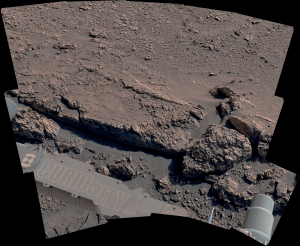Cassini Significant Event Report
For Week Ending 07/17/98
Spacecraft Status:
The most recent Spacecraft status is from the DSN tracking pass on Thursday 07/15, over Goldstone. The
Cassini spacecraft is in an excellent state of health and has successfully completed execution of the C8
sequence. The C9 sequence is now onboard and is executing nominally. The speed of the spacecraft can be viewed on the "Where is Cassini Now?" web page (http://saturn.jpl.nasa.gov/operations/present-position.cfm)
Inertial attitude control is being maintained using the spacecraft's hydrazine thrusters (RCS system). The
spacecraft continues to fly in a High Gain Antenna-to-Sun attitude. It will maintain the HGA-to-Sun attitude,
except for planned trajectory correction maneuvers, for the first 14 months of flight.
Communication with Earth during early cruise is via one of the spacecraft's two low-gain antennas; the antenna
selected depends on the relative geometry of the Sun, Earth and the spacecraft. The downlink telemetry rate is
presently 40 bps.
Spacecraft Activity Summary:
On Thursday, 07/11, maintenance was performed on the SSR Flight Software Partitions. This activity,
performed approximately every 2 weeks, repairs any SSR double bit errors (DBEs) which have occurred in
the code-containing portions of the Flight Software partitions during the preceeding period.
Also on Thursday, the RTE-158 data mode was enabled on the spacecraft, an autonomous thermal control
(ATC) limit was adjusted to reduce the operating temperature of the pressurant control assembly (PCA) by a
few degrees, and the CDS on-line Reset Counters were zeroed out. The enabling of the 158bps data mode
provides an intermediate data rate between the already-enabled rates of 40bps and 948 bps. An opportunity
will come in Fall of '98 to increase the downlink data rate from 40bps to 158bps, prior to the date at which
the telecom link will support the higher 948bps rate.
On Wednesday, 07/15, four activities took place. First, the Accelerometer Scale Factor was updated, based
on pre-Launch measurements, in preparation for two Main Engine burns planned for the Fall of '98.
Following this, a housekeeping activity was performed which reads out a set of AACS Attitude Estimator
(ATE) measurements not available in regular engineering telemetry. This ATE telemetry allows ground
controllers to track the normal functioning of the attitude estimator software onboard the spacecraft. The
readout is scheduled approximately every 2-4 weeks, over an available DSN telemetry pass.
Next, an AACS Fault Protection Log maintenance activity was performed. This realtime activity, scheduled
approximately every two months over an available command/telemetry pass, clears the AACS "high water
marks", reads out any items stored in the AACS fault protection (FP) log, then clears the log.
Finally, the Solid State Recorder (SSR) record and playback pointers were reset. This housekeeping activity,
done approximately weekly, maximizes the amount of time that recorded engineering data is available for
playback to the ground should an anomaly occur on the spacecraft.
Upcoming events:
Activities scheduled for the week of 07/17 - 07/23 include: Periodic Instrument Maintenance and an SSR
Pointer reset on 07/22.
Additional information about Cassini-Huygens is online at http://saturn.jpl.nasa.gov.
Cassini will begin orbiting Saturn on July 1, 2004, and release its piggybacked Huygens probe about six months later for descent through the thick atmosphere of the moon Titan. Cassini-Huygens is a cooperative mission of NASA, the European Space Agency and the Italian Space Agency. JPL, a division of the California Institute of Technology in Pasadena, manages the mission for NASA's Office of Space Science, Washington, D.C.
Media Relations Office
Jet Propulsion Laboratory
California Institute of
Technology
National Aeronautics and Space
Administration
Pasadena, Calif. 91109.
Telephone (818) 354-5011






























